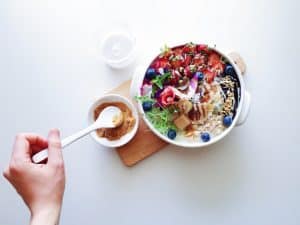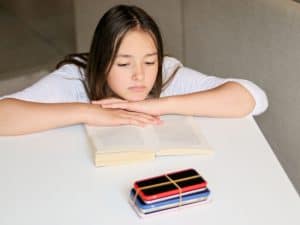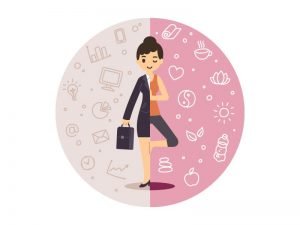If you asked me in college, “how much caffeine is too much caffeine?” I would have laughed at your question. There’s no such thing as too much caffeine, right?
Well, naive and coffee-addicted college me was incorrect. There certainly is such a thing as too much caffeine. And it’s important to know what that limit is for you. Consuming too much caffeine can come with some unpleasant side effects. So let’s talk about how too much of a good thing can do more harm than good for your body and mind.
How Does Caffeine Work?
When described by the Alcohol and Drug Foundation, they explain that “caffeine is a stimulant drug, which means it speeds up the messages traveling between the brain and the body.” You heard that right. Your morning cup of Joe is classified as a drug. No wonder it’s so easy to get addicted! It’s also why you’ll experience withdrawal symptoms when you don’t get your daily dose.
It works with the central nervous system to increase energy production by increasing your metabolic rate. Caffeine impacts your muscles and other areas of the body, including the brain. Additionally, caffeine blocks adenosine’s effects. This brain chemical is responsible for making you feel tired. So it increases energy production and stops you from recognizing that you’re tired in the first place. It also increases the release of adrenaline to up your energy output.
When used in moderation, caffeine can improve your mood, mental, and physical performance.
How Much Caffeine Is Too Much? And What Happens When You Have Too Much Caffeine?
Everyone’s tolerance for caffeine is slightly different. For example, if you have high blood pressure, you’ll want to work on limiting caffeine consumption in your daily routine. According to the Mayo Clinic, healthy adults can safely consume up to 400 milligrams of caffeine daily. Once you exceed that number, you’ll start to notice the side effects.
Caffeine is a stimulant, and when you have too much, you’ll notice an elevated heart rate and a temporary increase in blood pressure. If you indulge in caffeine too much, you could develop atrial fibrillation, an altered heartbeat rhythm.
One of the most common issues associated with too much caffeine is anxiety. Even people without clinical anxiety can struggle with the feeling of anxiety after having too many cups. The increased release of adrenaline and blocking of adenosine will trigger your fight-or-flight response due to your heightened awareness.
Caffeine can also really mess with your sleep. You can develop insomnia if you don’t know how much caffeine is too much. It can also create fatigue if you rely on it too heavily to give you energy.
It can also take a toll on your digestive health. Caffeine triggers the release of gastrin, which gets your bowels moving by speeding up your colon. You’ll also experience increased urination. That’s one of the ways coffee can dehydrate you.
Although rare, caffeine can cause rhabdomyolysis. It’s a condition where your damaged muscle fibers enter your bloodstream. The condition ultimately leads to kidney failure and other medical problems.
How Much Caffeine Is in One Cup of Coffee? Red Bull? Soda?
After familiarizing yourself with the negative consequences of too much caffeine intake and determining your threshold, it becomes essential to take a look at the caffeine content in your preferred beverages. Understanding the amount of caffeine in your favorite foods and drinks will assist you in staying within your daily limit.
Here are some of the caffeine amounts of some of the most common caffeine culprits.
How Many Milligrams of Caffeine in a Cup of Coffee? Tea?
According to studies by the Mayo Clinic, you can safely have four cups of brewed coffee a day to stay under the 400-milligram limit. Eight ounces of brewed coffee has approximately 95 milligrams of caffeine.
Remember that a literal cup and whatever mug you choose are not the same. Drinking from a large mug does not mean you’re limiting yourself to one cup! And keep in mind that all different coffee types have different caffeine concentrations. Starbucks’s Pike Place Roast has 410mg in their venti size.
If you’re a tea drinker, don’t think you are safe from indulging in your caffeine intake! Tea leaves actually possess a larger percentage of caffeine: 3.5% for tea as opposed to 1.1-2.2% for coffee beans. But due to the brewing process, more caffeine will get extracted from coffee beans, resulting in a higher percentage in the beverage itself.
An average cup of black tea will have around 47 milligrams of caffeine, but could have as much as 90 milligrams.
How Many Milligrams of Caffeine in Energy Drinks
Regarding caffeinated beverages, energy drinks can be some of the worst offenders. While some have less than a cup of coffee, some can run you close to the max of your daily limit of caffeine per day.
Here are the caffeine content numbers for different popular energy drinks:
- Red Bull: 80mg
- Monster: 160mg
- Rockstar: 160mg
- 5 Hour Energy Shot: 200mg
- Bang: 300mg
How Many Milligrams of Caffeine in Soda
If you want a beverage just to focus on drinking caffeine, most sodas won’t do much for you. While some have around the same caffeine content as black tea, other sodas don’t have any amount of caffeine in them. Here is the caffeine content for a few of the most popular sodas in the 12 oz size:
- Coca-Cola: 34mg
- Pepsi: 35-38mg (depending if you get diet or regular)
- Mountain Dew: 54mg
- Barq’s Root Beer: 22mg
- Ginger Ale: 0mg
Know How Much Caffeine Is Too Much for You
When figuring out how much caffeine is too much, it’s important to know your limits. Everyone’s tolerance is different; some people are more sensitive to caffeine than others.
Take it slow if you need to think about cutting back on caffeine. You don’t want to go cold turkey and deal with headaches and other symptoms of withdrawal. No matter how wonderful drinking coffee is, a cup of coffee isn’t worth risking your health.
Published in Featured Articles, HealthAuthor, Artist, Photographer.
Sarah Margaret is an artist who expresses her love for feminism, equality, and justice through a variety of mediums: photography, filmmaking, poetry, illustration, song, acting, and of course, writing.
She owns Still Poetry Photography, a company that showcases her passion for capturing poetic moments in time. Instead of poetry in motion, she captures visual poetry in fractions of a second, making cherished keepsakes of unforgettable moments.
She is the artist behind the Still Poetry Etsy shop, which houses her illustrations and bespoke, handmade items. She is the author of intricacies are just cracks in the wall, a narrative poetry anthology that follows a young woman discovering herself as she emerges from an abusive relationship.





